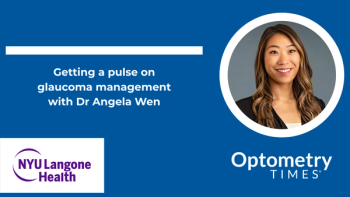
Sticking to glaucoma therapy regimens vital
Educating in-hospital care givers about anti-glaucoma medications required by patients significantly increased adherence to therapeutic regimens.
Enlightening patients about the ocular impact of not adhering to glaucoma medication regimens can be eye-opening for both the patients and physicians.
A recent study found that the overall topical glaucoma medication adherence rate for inpatients with a diagnosis of glaucoma was 75.3%. This rate increased to 85.1% among inpatients after providers were educated about the importance of continuous glaucoma treatment, according to Danny Mammo, MD, a senior resident at the Department of Ophthalmology and Visual Neurosciences, University of Minnesota, Minneapolis.
From the ophthalmologist’s perspective, strict adherence to glaucoma medication cannot be overemphasized. However, from the perspective of other medical specialists, the reasons for strict adherence are not always readily apparent given the nature of the disease. Sometimes, information about a prescribed glaucoma medication may not be available upon patient admission.
“Appropriate medication compliance has significant implications for ocular health,” Dr. Mammo stated and pointed out that by 2050, approximately 7.32 million people in the United States will have primary open-angle glaucoma.
Most previous research in anti-glaucoma medication regimen adherence has focused almost solely on outpatient adherence to these regimens. One study that addressed inpatient adherence took a look at hospitalizations from 2006 to 2009 (J Glaucoma. 2011;20:573-6) and reported an adherence rate to topical anti-glaucoma medications of 51.6%.
Since that time, when less than 10% of hospital used electronic medical records, many more hospitals (83.8%) have adopted electronic medical records-keeping. In light of this, Dr. Mammo and colleagues conducted a study in which they assessed adherence to topical anti-glaucoma medication regimens in an inpatient setting before and after an educational intervention of relevant health care providers took place.
RELATED:
The study
This nonrandomized comparative retrospective study included two groups of patients. The first included 142 inpatients with glaucoma who required topical anti-glaucoma medications between January 2014 and December 2018, the time period before the educational intervention of the care providers. The second included 36 inpatients with glaucoma who required topical anti-glaucoma medication from August 2018 to April 2019, the time period after an educational intervention was performed that targeted the inpatient care providers.
The patients’ medical charts were reviewed to identify all patients with a diagnosis of glaucoma admitted during two time periods at an 830-bed single center, academic hospital. The admission notes were examined to determine if the topical anti-glaucoma medication prescriptions were known on admission
The authors defined adherence as administration of more than 75% of the doses of anti-glaucoma medications prescribed.
Dr. Mammo recounted that the educational intervention included e-mails sent to internal medicine and general surgery residents, inpatient physician assistant staff, inpatient hospitalist providers and the nursing staff at the University of Minnesota, a weekly newsletter posting, and a morning report presentation to the nurses and internal medicine residents.
The study outcome measures were adherence to topical anti-glaucoma medications while hospitalized as an inpatient and whether adherence was associated with other parameters, such as the length of the hospital stay, numbers and types of medications, admitting diagnosis, whether the outpatient medication regimen was disclosed at admission, and whether the outpatient regimen was prescribed at the time of admission.
RELATED:
Dr. Mammo noted that the primary study finding was that the overall topical anti-glaucoma medication adherence rate was 75.3% before the educational intervention and 85.1% after the intervention, a difference that reached significance (p = 0.03).
The overall adherence rate was associated significantly with a known outpatient medication regimen and correct admission prescribing (p = 0.006 and p = 0.00, respectively).
Other parameters analyzed, i.e., the number of medications (p = 0.987), the length of the hospital stay (p = 0.620), admission diagnosis, and type of medication were not associated with improved adherence to the anti-glaucoma medication regimen.
Dr. Mammo suggested that further research is needed into the efficacy of “gentle reminders” as well as an investigation into the cost effectiveness of achieving higher adherence rates given that often times when a brand new topical glaucoma medication is opened, it is often then thrown out after the inpatient stay, which may or may not be the best use of healthcare resources.
“The inpatient topical glaucoma medication adherence rate has increased in the era of electronic medical record-keeping, but further education of inpatient health care providers can further improve adherence rates," he said. "Our study found that attention to correct medication reconciliation on admission is significantly associated with appropriate compliance.”
RELATED:
Disclosures:
Danny Mammo, MD
E:
This article was adapted from Dr. Mammo’s presentation at the 2019 meeting of the American Academy of Ophthalmology. Dr. Mammo has no financial interest in any aspect of this report.
Newsletter
Want more insights like this? Subscribe to Optometry Times and get clinical pearls and practice tips delivered straight to your inbox.













































.png)


